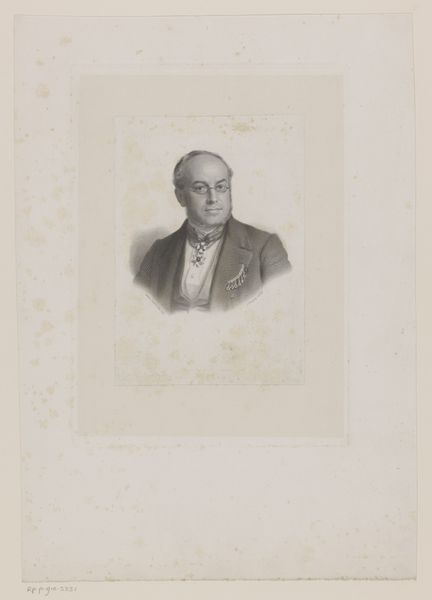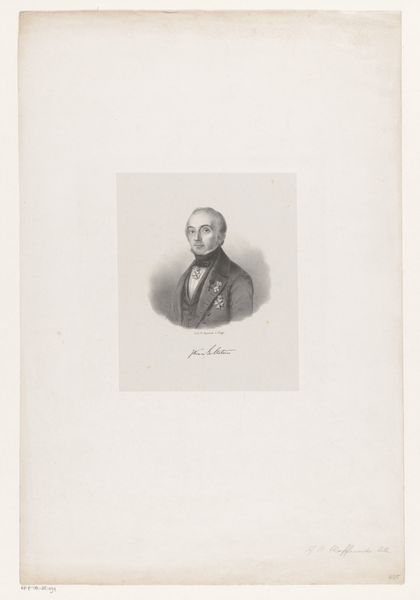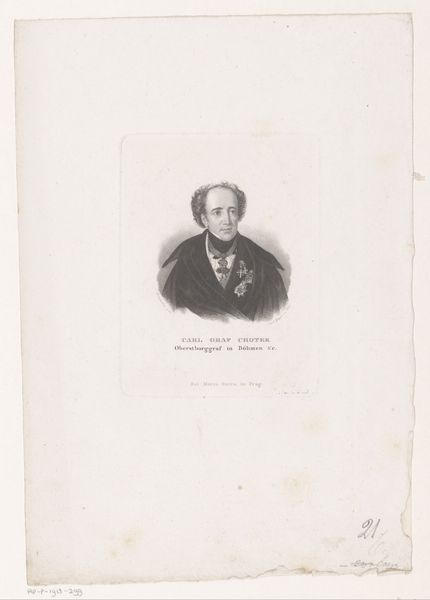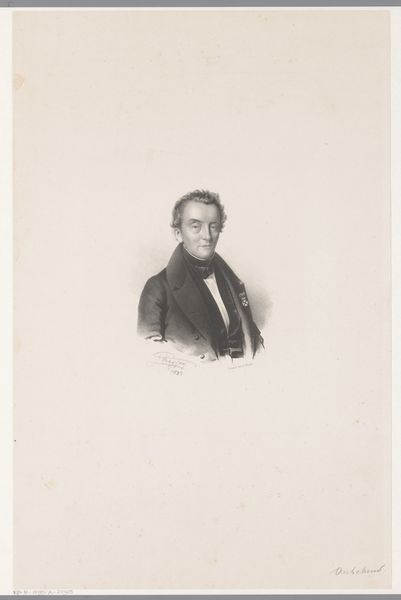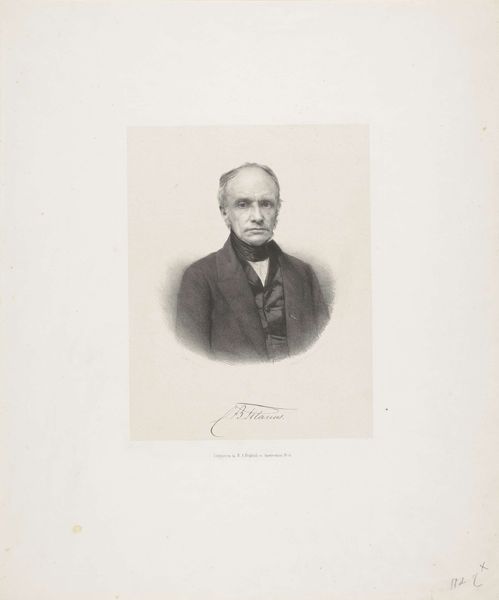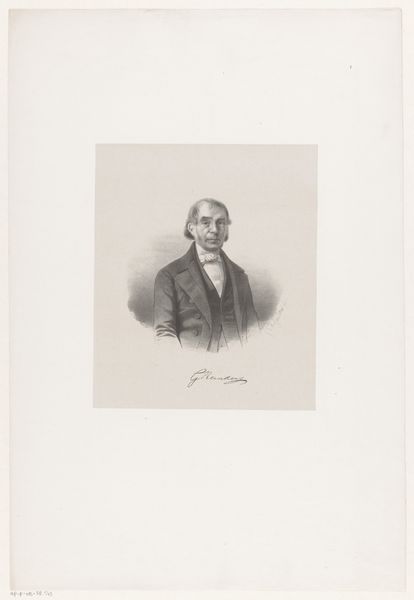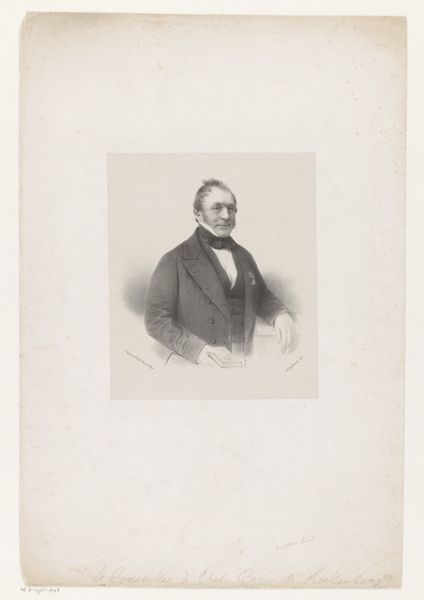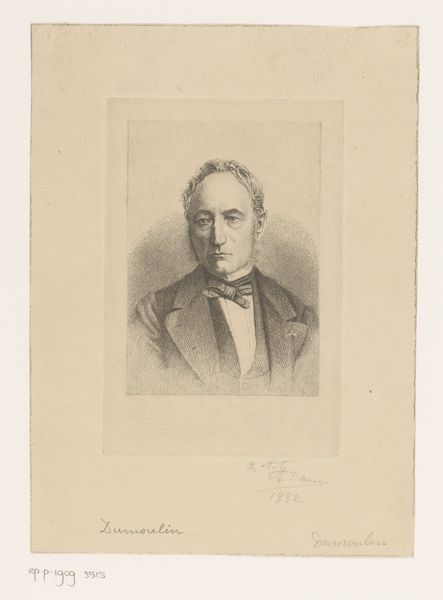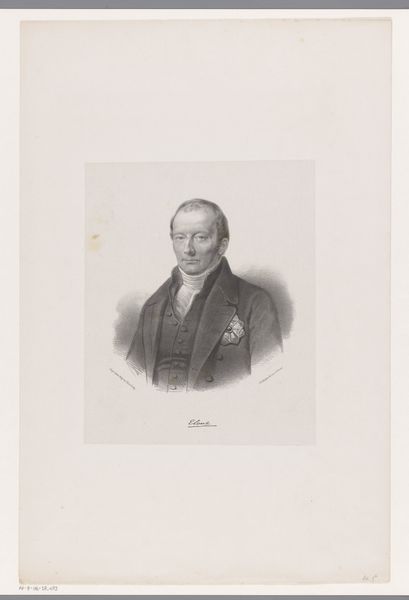
drawing, lithograph, print, paper, graphite
#
portrait
#
drawing
#
negative space
#
lithograph
# print
#
paper
#
pencil drawing
#
graphite
#
academic-art
#
realism
Dimensions: 438 mm (height) x 312 mm (width) (bladmaal)
Editor: So this is "P.V.T. Hyllested," a lithograph drawing from 1855, currently residing at the Statens Museum for Kunst. It strikes me as quite formal, almost severe. The subject's gaze is intense. What symbols or visual cues do you pick up on here? Curator: The lack of color immediately channels us towards the ideas of memory, or even memorial. What does black and white signify to you? Notice how the lithograph technique, a process of transferring an image from stone, replicates the tones of grey almost infinitely. Doesn't this reproduce a very democratic view, especially given the stern class dynamics of the mid-19th century? Editor: I didn’t consider that! It almost feels contradictory – this man exudes a certain status, but the medium lends itself to broader accessibility. The severe negative space amplifies that too. Curator: Precisely! The blankness almost swallows him. It’s stark, isn't it? Almost a foreshadowing of what Roland Barthes described as the "that-has-been" quality inherent to photographs. And that necktie so precisely obscures the neck! It visually represents a stiff upper lip; do you think this evokes British archetypes, or what, for you, constitutes the Danish character? Editor: I see your point. There’s a sense of restraint that maybe speaks to the period more broadly, but maybe there is something intrinsically "Danish" about that aesthetic. I hadn't thought of the visual cues like that. Thanks, I have much more to think about! Curator: Visual artifacts offer endless opportunities to rethink what we presume to already know; each symbol becomes a doorway.
Comments
No comments
Be the first to comment and join the conversation on the ultimate creative platform.
